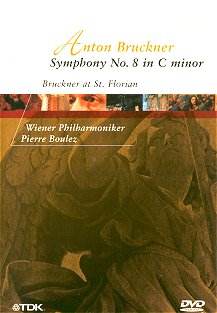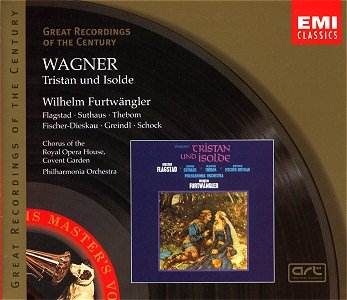 Composer: Anton Bruckner
Composer: Anton Bruckner
Works: Symphony No. 8
Performers: Vienna Philharmonic Orchestra/Pierre Boulez
Recording: Recorded 21-22 September 1996, St. Florian
Label: TDK DV-VPOBR
Anton Bruckner’s Eighth Symphony stands as a monumental testament to his unique voice in the symphonic repertoire, a work that reflects both a mastery of orchestral color and an intricate understanding of form. Composed between 1887 and 1890, this symphony encapsulates the late Romantic ideal, characterized by expansive structures and profound spiritual undertones. The choice of St. Florian, the monastery where Bruckner is buried, as the venue for this recording, enhances the work’s gravitas, creating a palpable connection to the composer himself. Pierre Boulez’s interpretation, captured in this DVD, presents an intriguing exploration of Bruckner’s complex soundscape through the lens of a conductor known for his meticulous attention to detail and a modernist sensibility.
The performance, helmed by Boulez and executed by the illustrious Vienna Philharmonic, is marked by a controlled yet emotive handling of the score. Boulez, conducting from the Haas edition, opts for a measured approach, avoiding the extremes of tempo and phrasing that can sometimes overshadow Bruckner’s architectural clarity. This restraint allows for the symphony’s thematic development to unfold organically, particularly in the first movement’s revised coda—’Totenuhr’ (Death Watch)—which Boulez treats with a somber, atmospheric touch. The addition of this material lends a weighty introspection that is effectively captured in the performance, though at times one wishes for a more pronounced dramatic contrast.
The orchestral execution is, as expected with the Vienna Philharmonic, nothing short of exemplary. The rich, warm tones of the strings blend seamlessly with the brass, while the woodwinds add a delicate layer of color. The use of longer bore horns, which Bruckner preferred, brings a unique character to the brass chorales, a feature that is particularly evident in the performance’s climaxes. However, the recording does present some challenges; while the overall sound is acceptable, it lacks the level of detail found in the accompanying CD release. The timpani, a vital element in Bruckner’s orchestration, are notably less prominent, which detracts from the impact of several climactic moments.
Boulez’s interpretation shines in the subtlety of phrasing and the nuanced dynamics throughout the symphony. However, there are moments, such as the scherzo’s trio, where a more liberal application of rubato could have injected additional character and spontaneity into the performance. The harps, often underappreciated in this symphony, emerge with a clarity that enhances the texture, particularly in the Adagio’s climactic moments. Boulez’s adherence to the score’s intricacies, particularly in the treatment of the revised sections, reflects a deep engagement with Bruckner’s intentions, although the visual presentation occasionally distracts from the musical narrative.
The DVD production by Brian Large, while competent in its execution, misses opportunities to more deeply explore the historical and spiritual significance of St. Florian. The visuals, though beautifully framed, often focus on the music without sufficient contextualization of Bruckner’s connection to the site. The accompanying interview with Boulez, while insightful, lacks depth regarding his interpretative insights into Bruckner, leaving one to ponder what additional layers of meaning might have been uncovered had the production ventured further into the composer’s biography and the venue’s significance.
This recording of Bruckner’s Eighth Symphony under Pierre Boulez is a significant contribution to the canon, showcasing both the interpretative prowess of the conductor and the exceptional capabilities of the Vienna Philharmonic. While there are technical shortcomings in the audio fidelity and missed opportunities for deeper contextual exploration, the performance itself is compelling and illuminating, offering a rewarding experience for both the seasoned listener and those newly encountering this great symphonic work. The artistic choices made throughout the performance resonate with Bruckner’s monumental spirit, ensuring that this interpretation stands as a noteworthy entry in the discography of one of the composer’s most profound symphonic statements.



